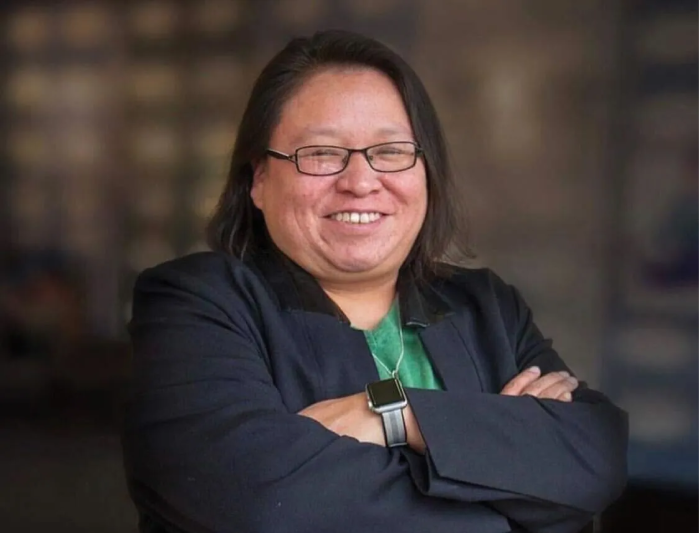By Sarina Trangle
It would take $120 million to curate a park along the abandoned Rockawy Beach LIRR spur, but QueensWay advocates contend most of the project could be funded by the federal government.
Friends of QueensWay, an advocacy group calling for transforming the 3.5-mile stretch running from Rego Park to Ozone Park into a High Line-style park with bike and pedestrian paths, released blueprints and a feasibility study touting the viability of the QueensWay Tuesday morning.
Standing in front of gated tracks obscured by greenery near Metropolitan Expeditionary Learning School in Forest Hills, Friends of QueensWay Steering Committee member Andrea Crawford and leaders from the national non-profit Trust for Public Land pitched the project as a boon for central Queens. The coalition, which funded the commissioned study in part with state funding, contended the park would increase property values at least 5 percent, direct $7 to $21 per visitor to nearby businesses, offer a safe route for bikers and pedestrians to traverse central Queens and provide educational and recreational space.
“I see new families coming into our neighborhood saying, ‘You know, I heard about the QueensWay and I was looking at that other borough, but I’m really interested in what you’re doing here,’” said Crawford, a Community Board 9 member.
The plan has faced fierce opposition in southern Queens, however, particularly from those pushing for the reactivation of the Rockaway Beach line. Transit advocates envision the LIRR running trains from Rockaway Beach up to the Queens Boulevard subway lines or offering LIRR service from Penn Station to newly-constructed Rego Park and Aqueduct LIRR stations.
State Assemblyman Phil Goldfeder (D-Rockaway Beach) said he expects a study on the competing vision to be out within weeks.
Adam Lubinsky, whose design and planning firm helped conduct the study, said the park would cost $120 million, but proponents anticipate “a large sum” coming from federal funding, coupled with city capital dollars and private donations. To date, advocates have raised $1.5 million.
Advocates were noncommittal about how long it would take to construct the QueensWay, saying it would unfold in phases over at least three years.
The 47 acres eyed for the QueensWay are owned by the city — 40 are controlled by the Department of Citywide Administration Services and seven are mapped parkland, so the Friends group said the project would not need to go through the city’s Uniform Land Use Review Process.
Maps show bleachers installed in the shade next to the Forest Hills Little League fields as well as a playground and recreational lawn.
Between Fleet Street and Metropolitan Avenue, fences and plants would serve as buffers to nearby residences.
The plan calls for bleachers near the Glendale baseball fields, batting cages, temporary food stalls, a farmer’s market and outdoor classrooms.
A climbing wall, pavilion, health cafe and outdoor exercise equipment are slated for the park’s intersection with Forest Park.
Due to the spur’s proximity to homes between Park Lane South and Atlantic Avenue, those tracks would be surrounded by fences and greenery.
The elevated viaduct near the southern end of the spur would be used for sports, games, performances, movie screenings and environmental education.
QueensWay advocates touted the backing of several elected officials, including U.S. Reps. Joseph Crowley (D-Jackson Heights), Grace Meng (D-Flushing), state Assemblyman Andrew Hevesi (D-Forest Hills), state Sen. Toby Ann Stavisky (D-Flushing) and City Councilwoman Karen Koslowitz (D-Forest Hills).
Mayor Bill de Blasio’s spokesman Wiley Norvell said, “We look forward to continuing conversations with stakeholders about the future of this asset.”
Reach reporter Sarina Trangle at 718-260-4546 or by e-mail at strangle@cnglocal.com.


































